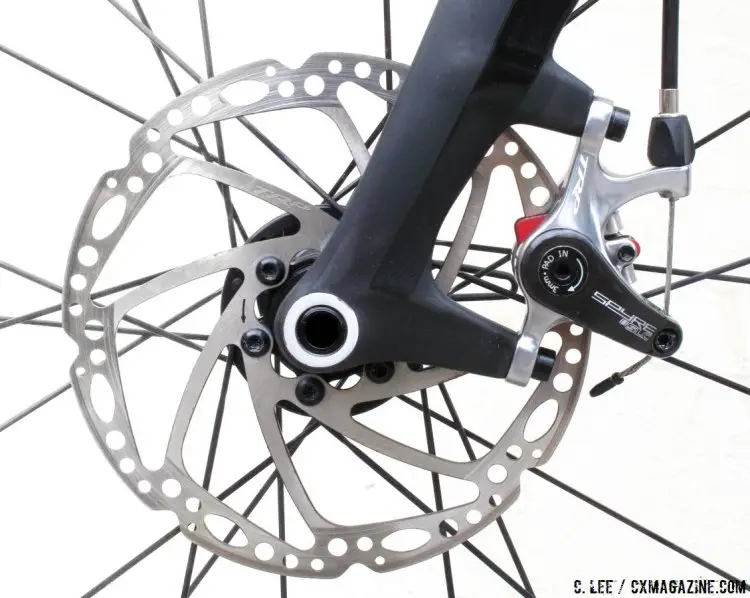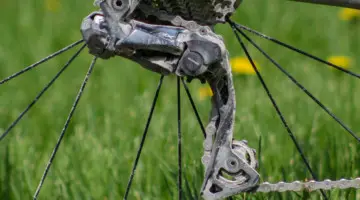
Is there a clear advantage to disc brakes for cyclocross racing? David Roberts set to find out. © C.Lee / Cyclocross Magazine
There’s a segment of the bike racing community that is made up of true tech geeks. Some of us count ourselves among that population. Like us, these are the folks that want to know not just tire choice, but air pressure as well. Front and rear. They want to know of personal modifications to stock equipment. And they like to draw comparisons and distinctions between different equipment choices riders make, especially what the Elite riders run.
Last year we took a look at some of the tech featured on the 2015 World Championship podiums in Tabor, Czech Republic as well as some of the lap times from both the 2015 Elite Men’s race and the Elite Women’s 2015 competition. That analysis and those comparisons were interesting and drew a fair amount of comment, both on the equipment choices and how it was put to use and the attendant results.
Recently, we came across an analysis by David R. Roberts of the brake choices—disc or cantilever—made by the 2016 World Championship Elite racers. Roberts has a strong science research background and is an ecological researcher as a post-doctoral Fellow in the Department of Biometry and Environmental System Analysis at the University of Freiburg in Germany. He’s also clearly a cyclocross fan and, like many of us, interested in the tech choices riders on the biggest stage make.
Roberts’ analysis looks at four main questions: do Belgians really ride cantis more than others, is there a difference in disc brake usage between men and women racers, do younger racers tend towards disc brakes and, the big question most often debated, do faster riders tend to ride discs.
You can see his full examination here, but Roberts’ conclusions, drawn from the sample size of the top 20 riders in the Men’s and Women’s Elite World Cup rankings and classifying each rider as disc or canti based on Google image searches, are interesting.
Whether it’s because they’re traditionalists or because discs are somehow incompatible with motors, they definitely favour cantis, with 14 of the 15 Belgian riders (93%) in the top 20 men and women opting to stay off disc brakes.
Roberts concludes that, yes, 93% of the top 20 ranked Belgian Elite Men and Women ride cantis. (He also notes that Belgians tend to be pretty dominant in the sport, in case you were unaware). He also found that there’s no significant difference in disc brake adoption between men and women, nor is there a clear trend towards younger riders opting for discs.
The ultimate question, which brake option is better for performance, was without a clear trend as well according to Roberts, disappointing news for riders in either camp for sure. As Roberts puts it:
It doesn’t matter if we’re talking about World Cup points or World Cup rank, there is no significant difference between disc and canti riders (p=0.26 by points and p=0.31 by rank). Yes, there’s a trend in medians towards faster riders on cantis, but we can’t infer (from this small data set anyway) that it’s anything more than would be expected at random. After all, the fastest and slowest riders in the top 20 are both on cantis.
It would be interesting to see Roberts analysis expanded across a larger data set, or at out own local scenes. For now, we’ll have to continue to debate the alleged superiority of [insert your preferred braking system here].




























